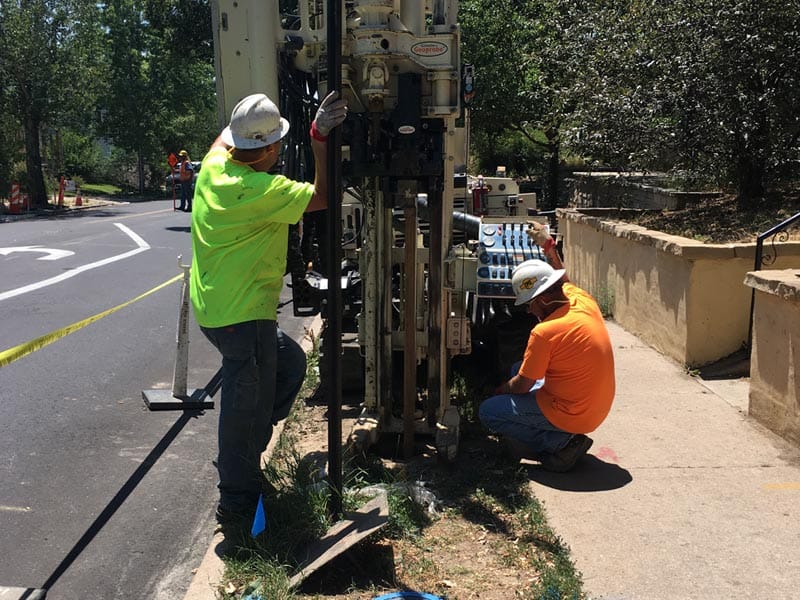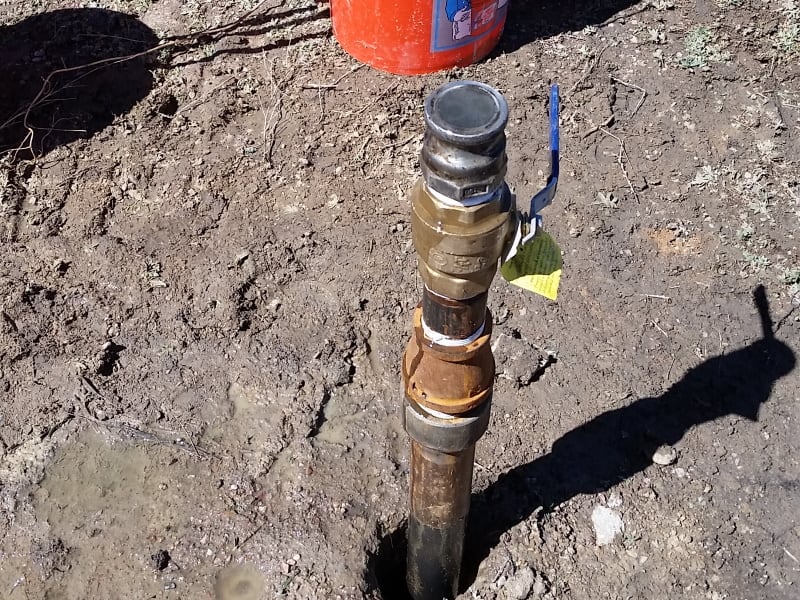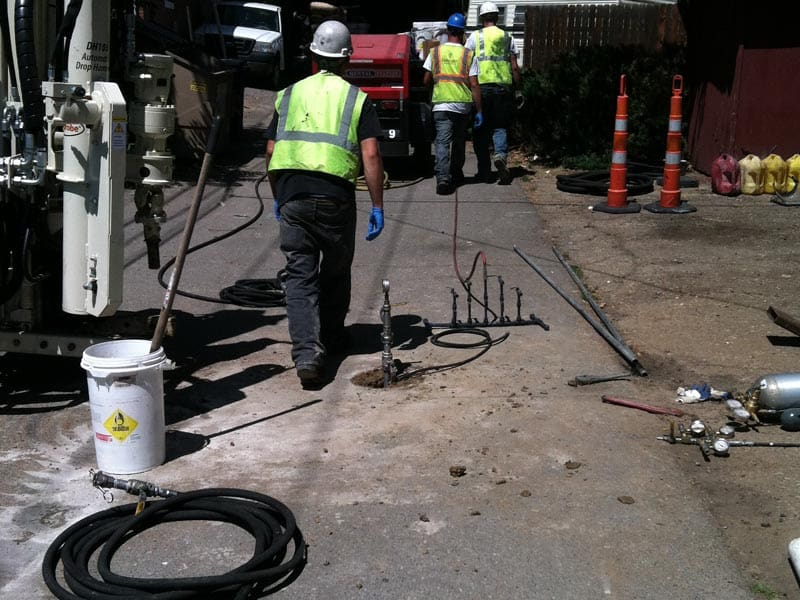Hydraulic fracturing provides a path to deliver treatment to tight spots
When remediation treatments can’t access contaminated soil below the groundwater table, CGRS Environmental Services uses a unique approach that takes a crack at it.
Hydraulic fracturing – the process of applying hydraulic pressure to create horizontal factures in the earth – allows the delivery of oxygen and/or chemical treatments to contaminants in tight formations composed of fine-grained soils such as clay or silt, with low permeability.
Despite the low permeability of clay and silt, these soils can become contaminated over time, making it a challenge to remediate. Hydraulic fracturing creates pathways for fluid-based treatment methods to penetrate into the fine-grained material and increases the rate of contact with the contaminants.
The process of hydraulic fracturing starts with drilling boreholes to target treatment depths and then applying hydraulic pressure to create fractures. These fractures radiate out horizontally from the holes and sand is injected into them. Once sand fills the fractures, air or fluids can be pumped through them to the contamination zone.
CGRS employed hydraulic fracturing to supplement previous remedial actions performed at a former bulk aboveground storage tank (AST) facility. Gasoline fuel released at the surface had migrated through the sandy soil down to the saturated zone at the facility. The contamination extended about 6 feet down below the water table. The water table fluctuates approximately 3 feet up and down during the year, which moves the contamination up and down through the soil pores. The gasoline contaminants dissolved in the groundwater and slowly migrated into the soil pores, even below the water table.
CGRS targeted the depths for hydraulic fracturing by installing soil borings to about 10 feet below the water table. Analytical data from those soil samples identified the zones of contamination.
While the initial use of soil vapor extraction (SVE) and biosparge were successful in remediating contaminant concentrations in the permeable sandy soils in the unsaturated zone, they were less effective in moving air through the tight soils of the saturated zone, where contaminant concentrations in groundwater and soil below the groundwater table persisted at high levels. Hydraulic fracturing appeared a viable remediation approach, and CGRS performed high-resolution soil sampling activities to identify zones of residual contamination and to determine depths to target. From those results, hydraulic fracturing was performed in nine boreholes using direct push methods at depths of 25, 27 and 29 feet. After completing the sand-filled fractures, CGRS constructed air sparge remediation wells – applying pressurized air from a compressor into the fracture-enhanced wells – with screened sections intersecting the fractures.
From field measurements and analytical results, CGRS determined the horizontal influence from the fracture-enhanced air sparge wells was in excess of 15 feet. After approximately 20 months of operation, groundwater contaminant concentrations had decreased below target cleanup levels.
The availability of technology like hydraulic fracturing makes it possible to remediate contamination in some of the tightest formations, and this release event will likely receive closure because of it.






